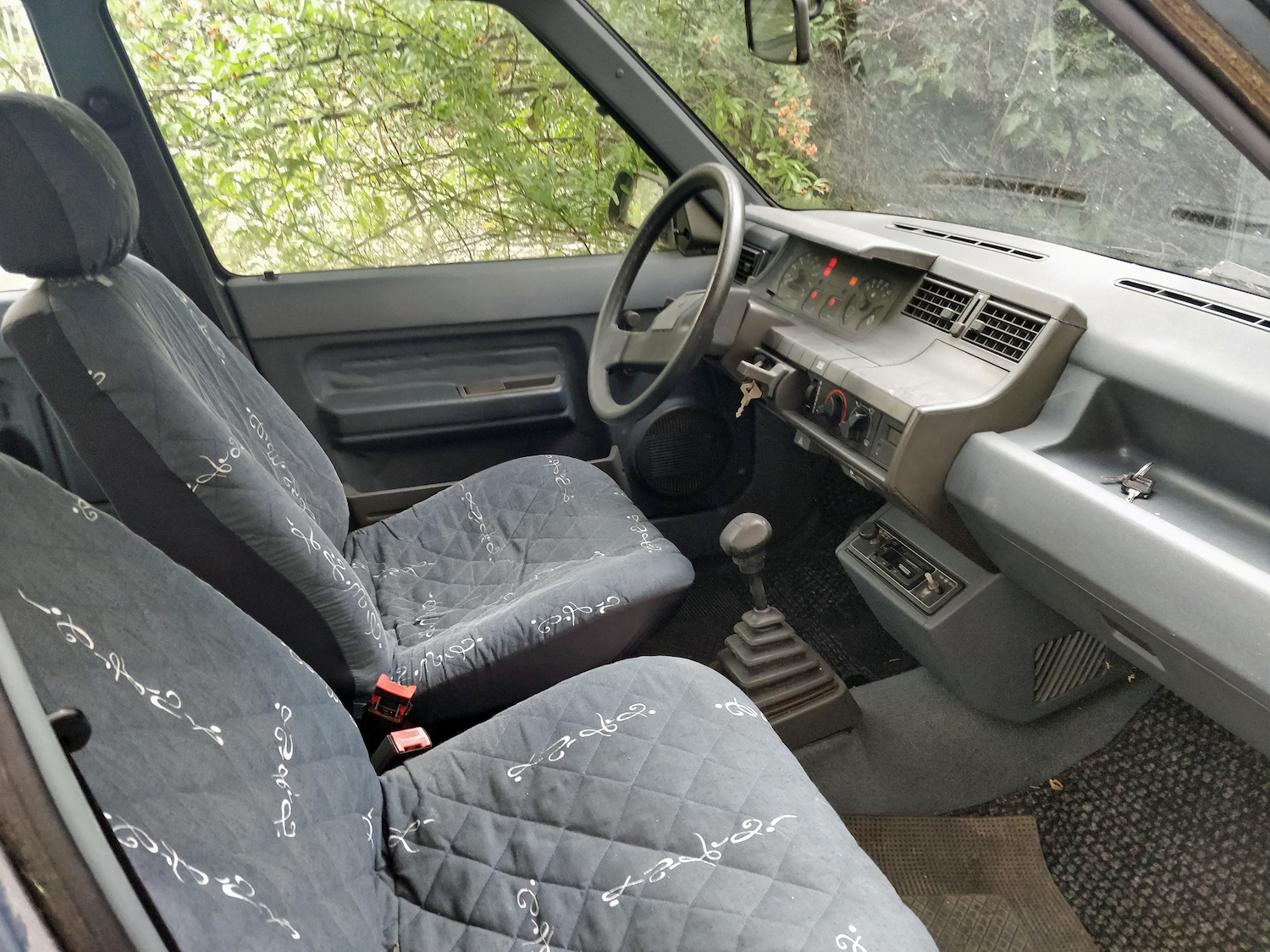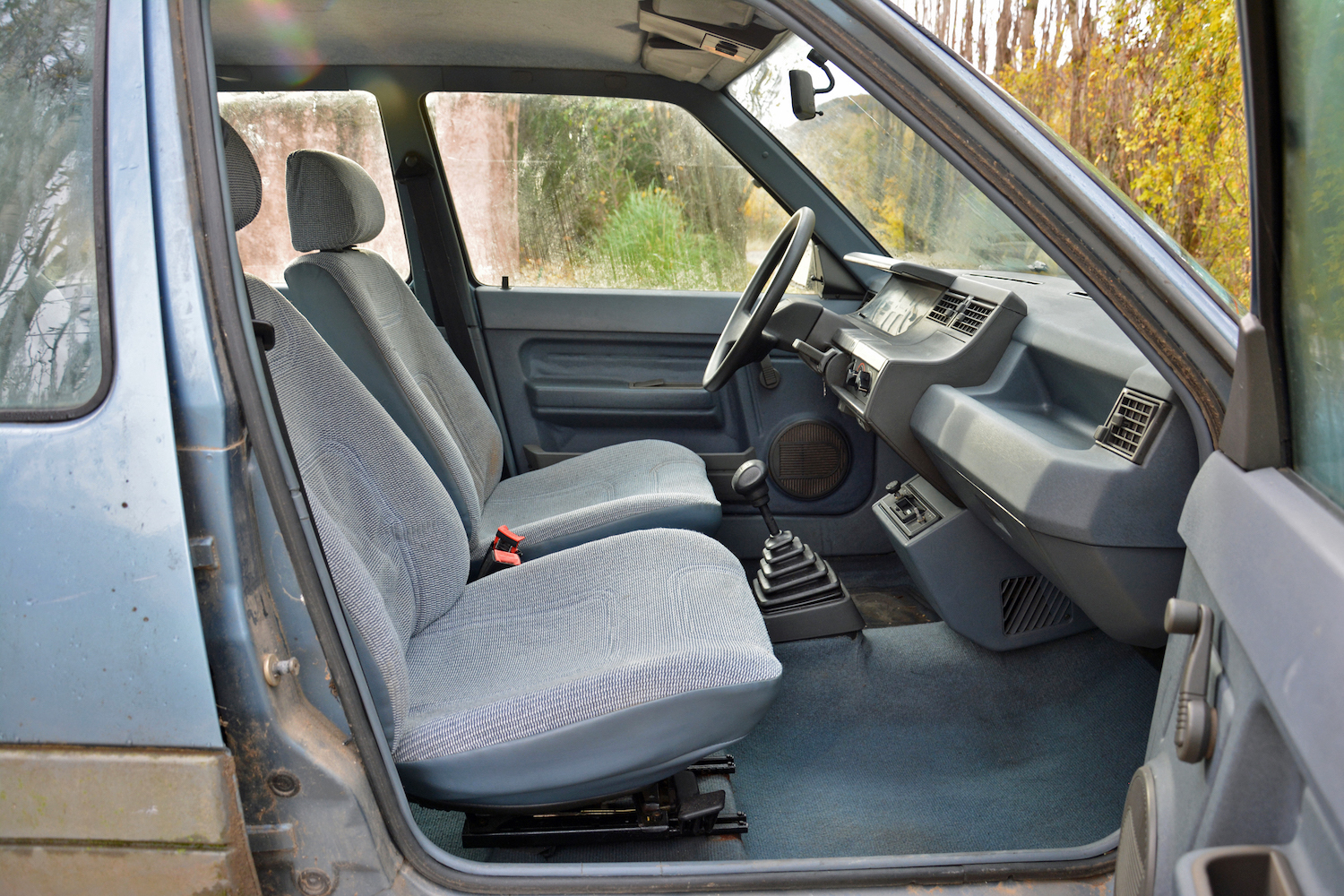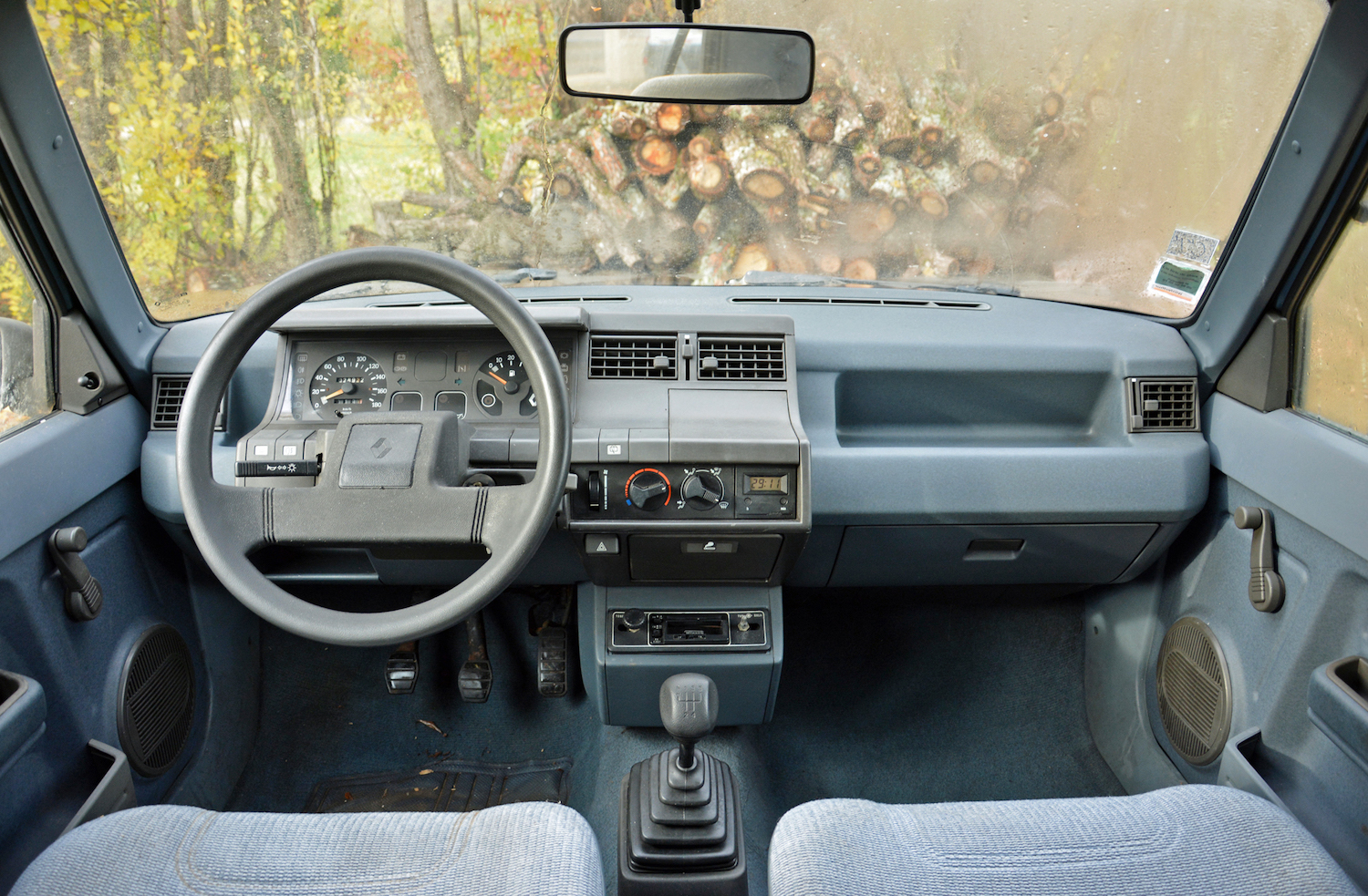Media | Articles
How I revived a $100 car that sat for 17 years
The voice at the other end of the line sounded exasperated. “I don’t know, give me 100 bucks and get it out of my yard.”
The car in question was a Renault Super 5, the Marcello Gandini-designed successor to the original 5 unceremoniously sold in the United States as the Le Car. It was advertised in my local French newspaper as a 1990 model with 110,000 kilometers (68,000 miles). Figuring I had nothing to lose, I agreed to drive a mile or so into town and check it out. I knew exactly which car he was selling when he told me where to find it. It was the blue one next to the abandoned house that I bike past on a regular basis.
Once on location, the seller gave me the SparkNotes version of the car’s history. It was parked when the last owner died in 2002, and the property was left vacant not long after. The Renault was an unwanted part of the deal when he bought the house. He told me he had zero interest in it, and the only thing he cared about was getting it out of his way. The story checked out: the registration and insurance stickers on the windshield both expired in 2003, and it certainly looked like it hadn’t moved in 17 years.
And, holy moly, it smelled like it. I got a disgustingly strong whiff of rodent urine when I poked my head into the engine bay and immediately noticed a pile of snail shells on top of the transmission. While I’m not a biologist, I’ve never heard of stick-worshipping snails seeking a manual gearbox to die on. Voles (similar to hamsters) love to snack on them, though, and they bring the food they scavenge back to their nest. Hundreds of droppings confirmed my hypothesis, as did a pack of rodent-killing pellets that had been chewed through. The more I poked through the engine bay, the more left-over snails I found.
Marketplace
Buy and sell classics with confidence



The Renault initially looked like a parts car at best, and there wasn’t anything I needed from it. However, giving it a second once-over revealed several key points the seller didn’t tell me about. It was a pre-facelift model wearing a 1986-issue registration number, so it was older than advertised. Ironically, it was sold new about 200 yards up the road from where it was left for dead. And, the odometer actually read 28,922 kilometers, which represents only 17,971 miles. Plus, voles hadn’t broken into the interior to escape the Alpine winter, so everything inside was in excellent condition, all things considered. This was a true survivor. It was complete down to its original hubcaps, hadn’t been modified, and seemingly led an easy life until it was taken off the road in 2002. It was a GTL model, too, which is one of the more desirable and drivable variants of the Super 5. With exponentially more curiosity than sense, I agreed to buy it.
It was advertised at €110, presented as a €100 car over the phone, and yet its price had gone up to €120 euros (about $130) by the time I said, “I’ll take it.” I didn’t argue, since all of those numbers sounded fair. Questions lingered as I handed the seller cash. Would the engine turn, let alone start? Had the voles used the wiring loom to make living room furniture? Could I push the thing home? It wasn’t far, it was all downhill, and it would probably be easier than getting it running on-location, and less risky than hooking it up to my Renault Kangoo’s hitch and exceeding its towing capacity.
I had a spare battery in my van from another project, so after checking the oil (nearly full but gross), I popped it in and gave the ignition a split-second turn to find out whether the engine was seized. It wasn’t. The tank was completely empty; in hindsight, I think someone prepared this car for long-term storage. I put fresh gas in it, poured a little bit down the carb, and it fired up on all four cylinders.
The seller and I couldn’t believe it. It stalled when I tried to gently back it out because it had started sinking into the ground, the tires were flat, and the brakes were seized. I started it up again, still in utter amazement, and this time I explored the upper echelons of the engine’s rev range. The brakes came loose with a loud shlunk as it effortlessly pulled itself out of the yard it was embedded in. After letting it idle for a few minutes, I realized I could realistically drive it home, which I did a few days later (in the pouring rain) once I’d topped up the coolant, added oil, and filled the tires. I wouldn’t have driven it much farther, or gone much faster than about 35 mph, but the trip went smoothly.



While cleaning the interior was pleasant and relaxing, getting rid of the rodent restaurant in the engine bay was terrifically gut-churning. Animals had taken over every nook and cranny. The real treat they left for me was the snail pyramid on the transmission. Poking it with a screwdriver revealed it was a lasagna-like mass with layers of snail shells, vole crap, the occasional carcass, and some hay securely cemented together by the various juices all of these things can produce. And, to strengthen the Noah’s Ark vibe, slimy earthworms had started gnawing through the lump. It took over an hour to get rid of it all. The good news was that, spiders and worms aside, all of the animals I found in it were long dead.
The voles luckily didn’t take a fancy to the wiring Renault put in its cars during the 1980s, so everything electrical works. The 60-horsepower, 1.4-liter four-cylinder engine starts reliably, revs freely, and idles smoothly. What more can you ask of a car that cost less than a dealership oil change?
I’m still waiting for a sunny day to wash the exterior. In the meantime, the to-do list is unsurprisingly long. The brakes are nearly useless, the tires are old enough to vote, the exhaust is about to fall off, and I imagine there are many plastic and rubber parts dying for the opportunity to disintegrate at the worst possible time. One of the window cranks has retired from cranking, there is some rust on the passenger-side rocker panel (#TheAlps), one of the doors doesn’t close properly, and getting it registered will require slashing my way through miles of red tape.
But, damn, I’m glad I rolled the dice on it.






















